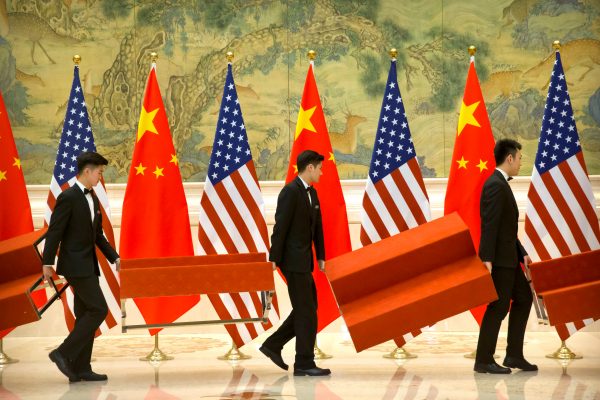Until recently, the United States supported China’s global integration based on a set of core expectations. Among these is the assumption that as China benefitted from the international economic system, including WTO membership, it would be a responsible stakeholder. China was expected to work with the United States ‘to sustain the international system that has enabled its success’. But this view of China evolved into seeing the country less as a partner and more as a competitor, culminating in the current bilateral economic tensions.
The US concerns that underpin these tensions stem from specific practices endemic to China’s economic model that systematically tilt the playing field in favour of Chinese companies. China’s economic system relies on state-determined economic goals, and the allocation of resources and finance to state-owned enterprises (SOEs) to achieve these goals.
In addition, China’s industrial policy is increasingly aimed at self-sufficiency in emerging technologies, which stands at odds with a trading system based on comparative advantage. China’s use of industrial policy to pick winners is expected to continue leading to excess production and dumping overseas, including in the area of advanced manufactured goods as the economy gears up to produce robots, new energy vehicles and batteries.
US unease over China’s economic model also arises at a time of increasing concern over China as a threat to US national security, particularly with respect to technology access.
Amid all of this, clarity about the economic costs and benefits to the United States from trade and investment with China is important. The economic relationship delivers more benefits to the United States than is commonly understood.
It is estimated that US exports to China support around 1.8 million jobs in sectors such as services, agriculture and capital goods. When the activities of affiliates of US and Chinese companies in each respective market are factored in, the United States is shown to sell more to China than vice versa.
But China–US trade has also led to job destruction in some US industries — particularly low-wage manufacturing. And China’s economic practices regarding intellectual property (IP) and technology transfer risk harming the US services sector and knowledge economy.
China’s economic system also places several acute stresses on the WTO. China made significant commitments as part of its WTO accession in 2001 but developments in the Chinese economic system mean these commitments are increasingly difficult to enforce. China’s unique economic model presents new challenges that were not anticipated at the time of its WTO accession and are therefore not covered by WTO rules. Meanwhile, scepticism over the WTO’s capacity to deal with the magnitude of the China challenge — both in terms of the rules and the dispute settlement system — is on the rise.
Despite its drawbacks, the WTO remains central — though this is contingent on strong US leadership. The WTO offers the only global set of trade rules that both reflects core US values and forms a baseline on which to build global support for a push back against Chinese economic practices.
Where China is in breach of its WTO commitments, WTO cases should be brought against it. Where WTO rules are unable to discipline Chinese trade practice, bilateral or unilateral action may be necessary. For its part, China must comply with its WTO commitments and make certain reforms that will likely touch on areas of state control over the economy. The United States and China should seek a WTO waiver for any bilateral deal that might be inconsistent with WTO rules in order to minimise harm to the institution.
The US administration also needs a forward-looking trade policy to establish free trade agreements (FTAs) with allies that raise the standards for trade. In this context, re-joining the Comprehensive and Progressive Agreement for Trans-Pacific Partnership (CPTPP) should be a priority. The administration should also control access to US technologies through foreign investment and export controls, effectively using WTO-consistent tariff policies to minimise the harm from Chinese economic practices on US businesses.
In taking this multifaceted approach, the United States needs to uphold its core values such as non-discrimination, transparency and rule of law. Working toward a managed trade framework more akin to the Chinese model would undermine the WTO and be inconsistent with these values. China purchasing more US goods would also likely violate China’s most favoured nation (MFN) WTO commitment and disadvantage US allies.
Instead, the US administration should aim for long-term, market-orientated solutions while also strengthening the global trading system and rule of law.
Dr Joshua P. Meltzer is a Senior Fellow in the Global Economy and Development program at the Brookings Institution. He is also a Member of the Australian National Data Advisory Council and a Senior Fellow at the Melbourne Law School, the University of Melbourne.


It seems to me that China was welcomed by the WTO only If it promised to remain subservient to the he USA. As soon as it seeks to become an equal, then it’s perceived as a threat.